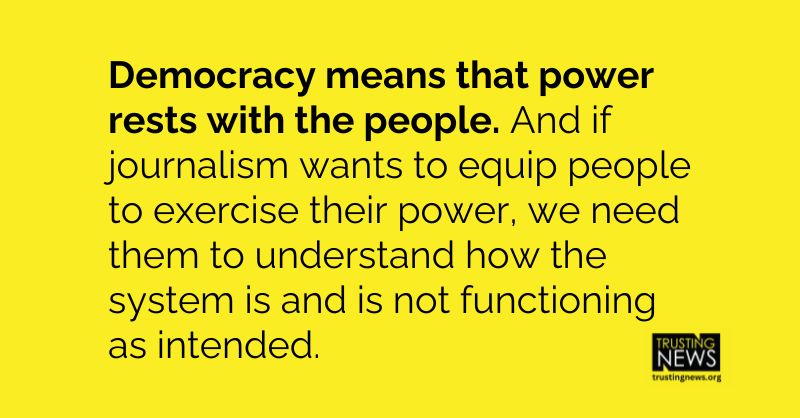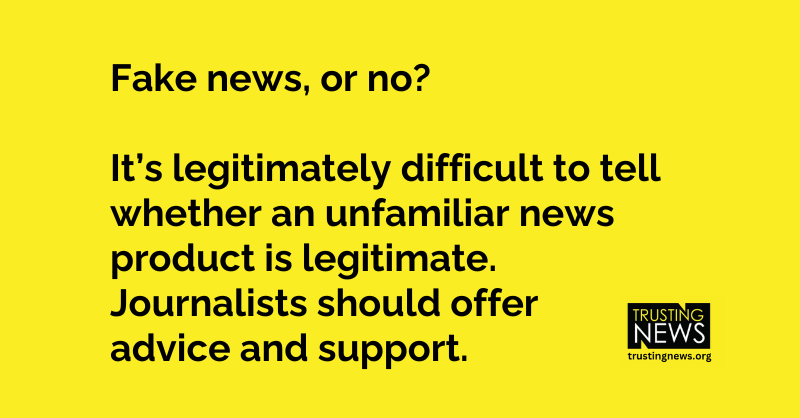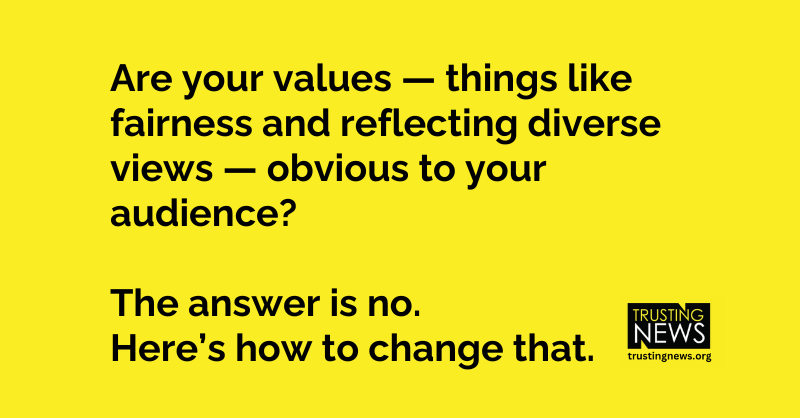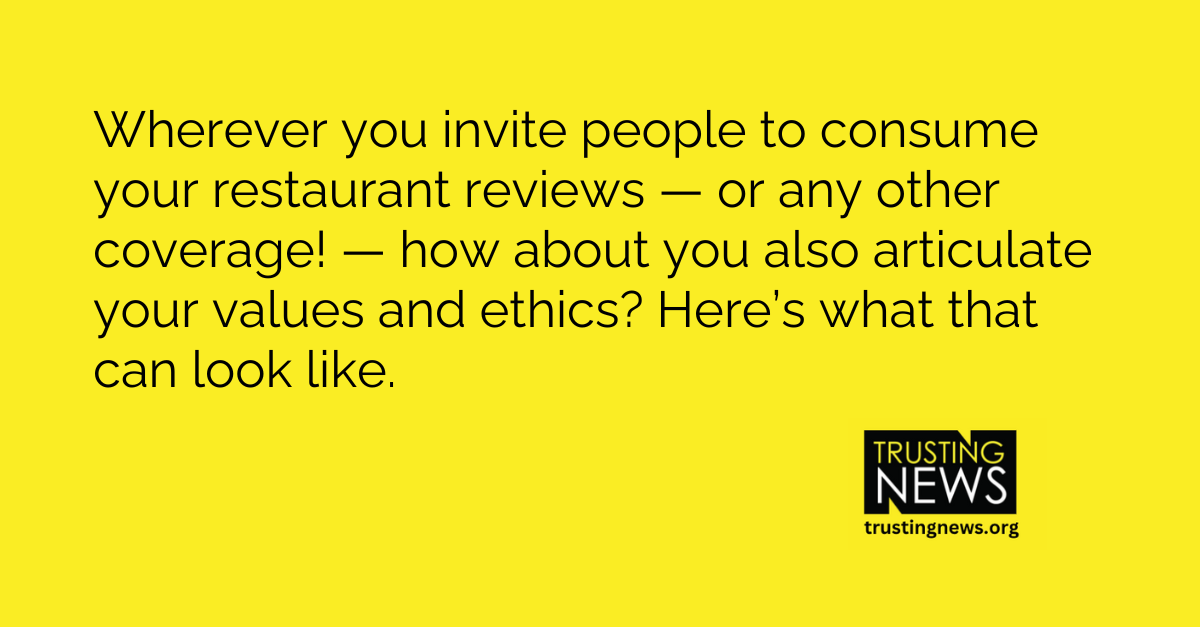
Whether people will see your content in a social post, a video or a flyer in a coffee shop, consider what you want them to know about your journalism.
Be clear about what makes reviews credible
Want to get this Trust Tips newsletter in your inbox each Tuesday? Subscribe here.
Journalists think about where information comes from WAY more than average people do, and that makes it easy to forget some basic truths:
- People encounter information in all sorts of formats and locations.
- The packaging does not usually include direct information about where it came from or why it’s credible.
- As information providers, too often we don’t invest in sending signals of our credibility. We take for granted that the content will speak for itself, or will be received in the spirit in which it was created.
Because of that, I’m always excited when I see an invitation to consume journalism that includes messaging about its credibility. Plenty of outlets describe their integrity somewhere on their website, but very few include it in the packaging that travels with content around the Internet and the physical world. (Try this fun game: How many clicks from your home page does it take to get to information about your ethics?)
Thanks to Anika Anand of Commoner Company for thinking of us and sending a picture when she saw this flyer about restaurant reviews from The Infatuation in a Seattle bagel shop and sending it our way. The Infatuation, which operates in a whole lot of cities, describes itself this way: “Our mission is very simple: to bring you the most honest and trustworthy opinions on where to eat around the world.”
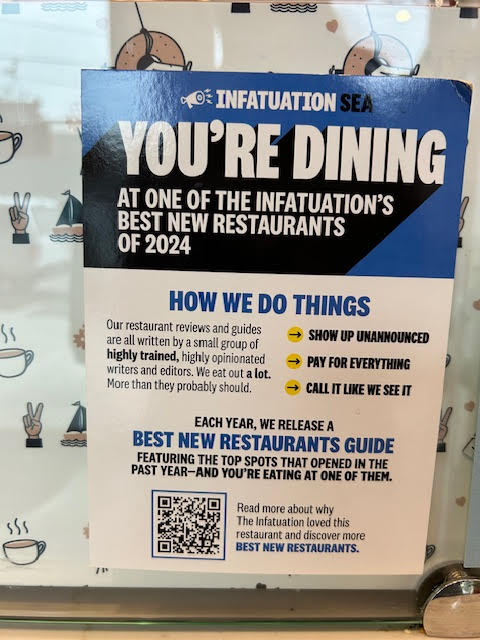
The Infatuation’s About page elaborates on the elements in the flyer (and also prominently discloses its ownership). The descriptions do a good job laying out the integrity of the review process.
What we can learn from how this flyer describes restaurant reviews:
- The invitation to consume content doesn’t assume everyone will already know the brand behind it. This seems simple, but so many newsrooms don’t do this.
- It also recognizes the need to stand out from less service-oriented information sources. There is no shortage of restaurant reviews these days, but the mission behind them isn’t always a journalistic one. In many cases, people creating reviews are probably known by the restaurant, getting free meals, and unlikely to be critical if it might ruffle feathers or decrease future access.
- The flyer uses plain language to explain that the reviewers are anonymous to the restaurants, pay their own way and tell the truth about their experiences — because the truth is what’s helpful to their audience. Their website says: “Our goal is always to be honest at all costs, and to help you make good decisions about where to spend your money.
We wrote recently about how Wirecutter, another review site, describes the credibility of its staff and their process. Reviews are a fantastic avenue for describing the expertise and ethics behind opinions — especially as it gets easier these days to find opinions and harder to tell whether there’s any research or knowledge behind them.
The lessons apply beyond reviews, too.
My favorite thing about this flyer is that it anticipates the questions or misassumptions people might have and addresses them proactively. The messages embedded here could have broad application to other areas of journalism.
- Journalists’ primary mission is to give people information that helps them live their lives. That’s why it’s a public service, and that’s what separates it from other messages.
- Some journalists are paid to share their opinions, and those opinions should come with standards and research.
- Journalists’ work sometimes reflects a business in a positive or negative light, but that is a byproduct, not the journalists’ purpose. Their motivation is not to help or harm the business.
- Responsible journalists should not trade coverage for perks, access or other personal benefits.
The messaging about your integrity can go everywhere you’re inviting people to consume your content.
In our dream world, every time people consume journalism, they’re also exposed to information about why that journalism is worthy of trust. After all, every encounter might be their first with you, right?
What can you include on social media — as part of an existing text or video post, in a comment, or as a stand-alone post?
What can you include in content you know will travel beyond your usual audience — in an editor’s note, or a box with a story?
What can you distribute in person as your staff meets new sources, visits community meetings or holds office hours?
Find strategies and examples for building this messaging into your daily journalism in our Transparency Trust Kit.
At Trusting News, we learn how people decide what news to trust and turn that knowledge into actionable strategies for journalists. We train and empower journalists to take responsibility for demonstrating credibility and actively earning trust through transparency and engagement. Learn more about our work, vision and team. Subscribe to our Trust Tips newsletter. Follow us on Twitter, BlueSky and LinkedIn.

Executive Director Joy Mayer (she/her) founded Trusting News in 2016 after a 20-year career in newsrooms and teaching. She lives in Sarasota, Florida, and can be reached at joy@TrustingNews.org.

